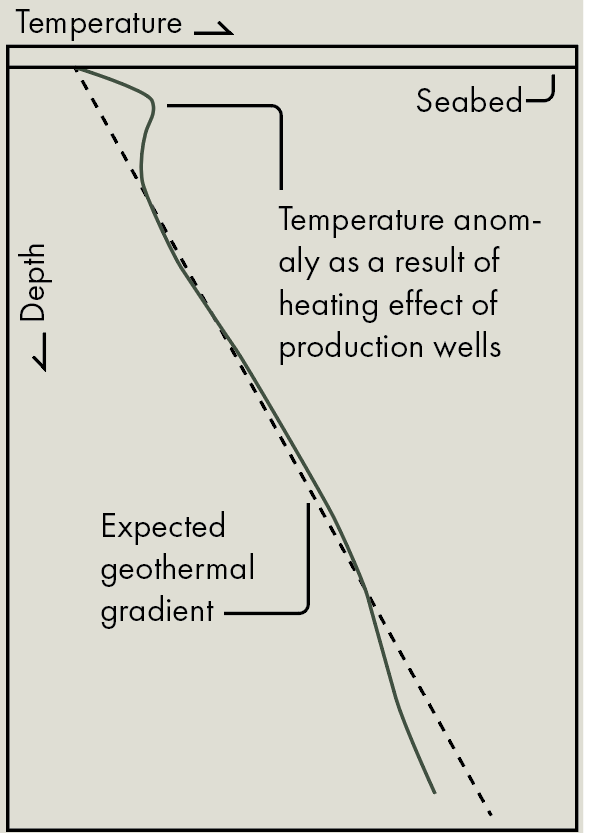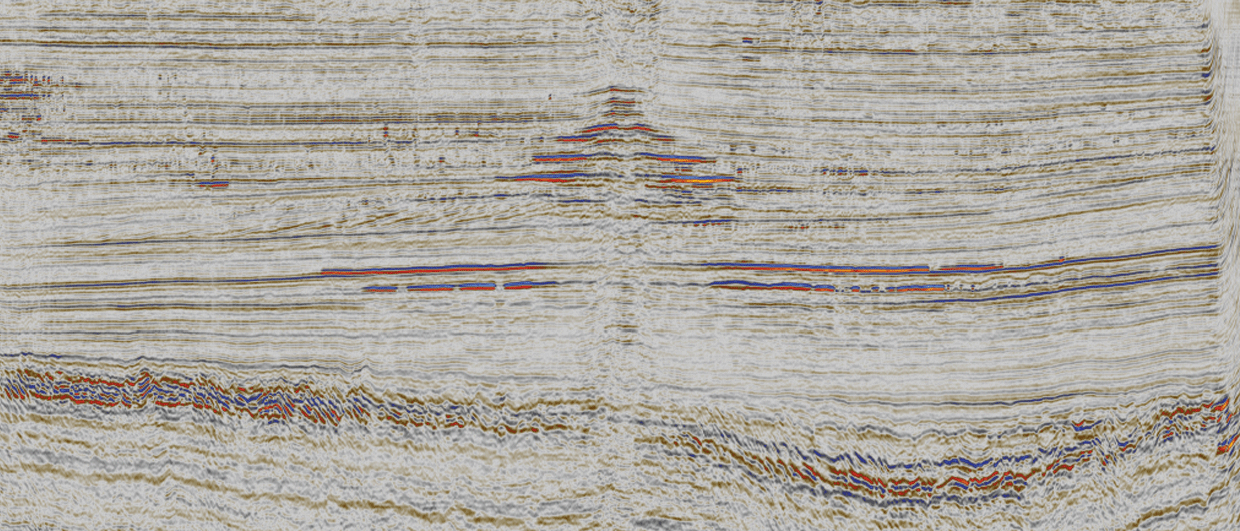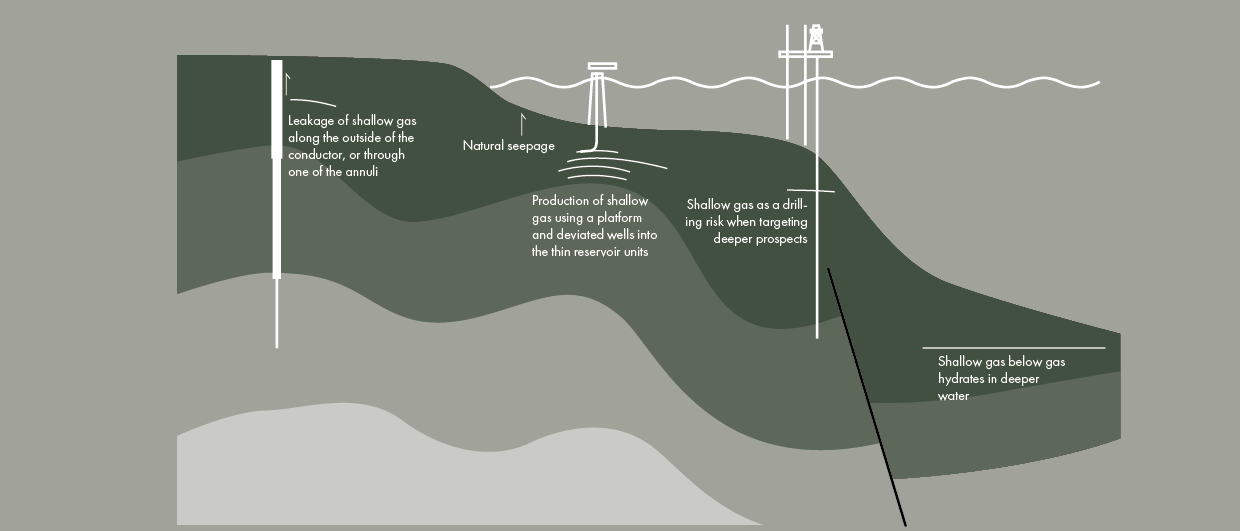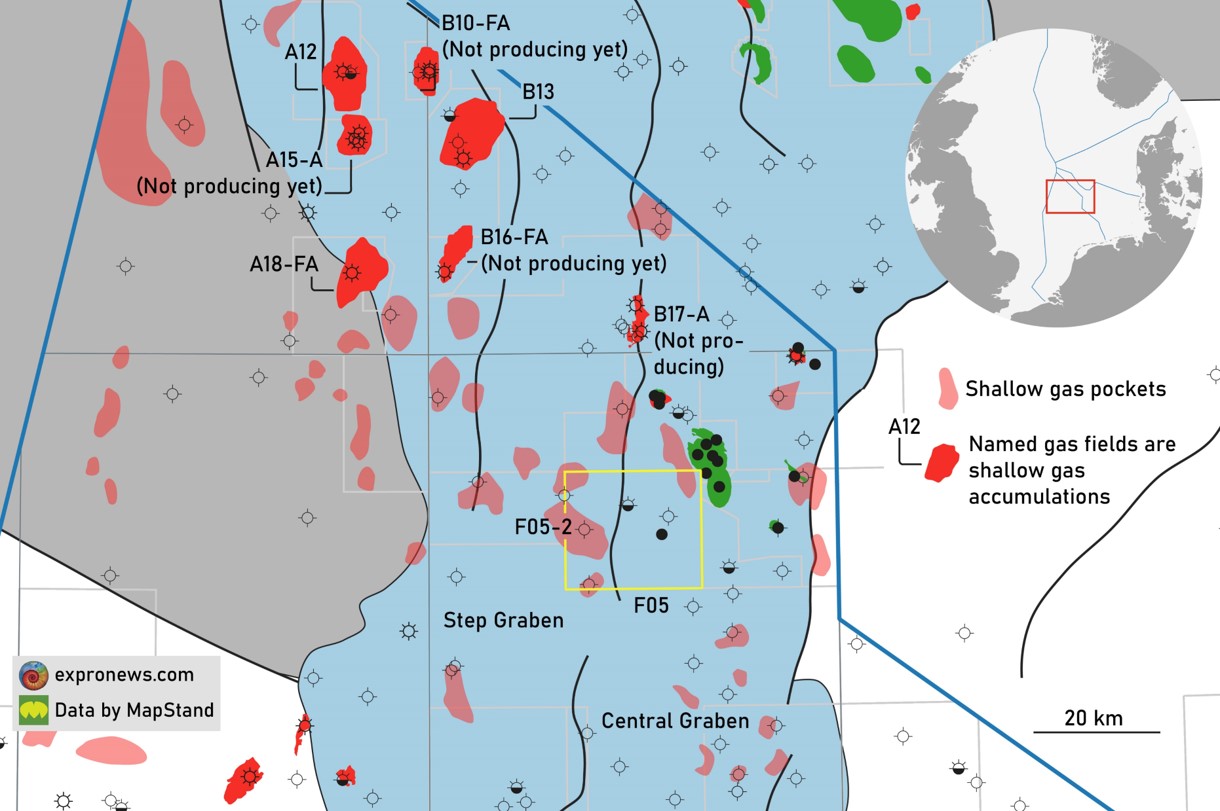This is the third and final article in the article in the Shallow Gas series, brought to you by Francis Buckley.
Read the previous articles here: Shallow gas: How to better map the risk? and Shallow gas as a resource.
Apart from considering shallow gas as a drilling risk when exploring for deeper targets or targeting shallow gas as a resource, it has also been shown that during production and subsequent decommissioning activity, shallow gas may have a significant effect on the subsurface fluid migration regime. Gas migration up the outside of casing strings and from leaking casing shoes may collect in porous lithologies and present a risk to further drilling operations and more especially to decommissioning projects.
As an example, a North Sea development was planned in an area apparently clear of seismic anomalies. The production wells were drilled without reported problems prior to 2002. However, a complex seismic anomaly at a depth of 669 – 726 m MSL, centered on one of the production well paths, became apparent on 3D data acquired in 2002. Further work showed that the anomaly had increased in diameter from 295 m in 2002 to 470 m in 2008. Lithological data at the depth of interest was scarce, but a thin sand unit was interpreted just above the anomalous event from GR log data at one of the wells. A subsequent HR3D and swathe bathymetry survey over the area revealed a possibly leaking well-head and / or gas migration to seabed outside the conductors.
Methane leakage
A recent study by Böttner and co-authors documented an approach for assessing methane leakage from offshore decommissioned wells based on a combination of existing regional industrial seismic and newly acquired hydroacoustic water column imaging data from the Central North Sea. They concluded that 28 out of 43 investigated wells release gas from the seafloor into the water column. This gas release largely depends on the presence of shallow gas accumulations and their distance to the wells.
Böttner’s workflows, summaries and conclusions were largely discounted and dismissed by geologist Martin Wilpshaar and co-workers from TNO – Geological Survey of the Netherlands. Böttner et al. (2020) used hydroacoustic water column imaging to identify gas flares from the bottom of the North Sea in a part of the UK continental shelf. The fundamental critique was that two logical explanations for the flares as observed were hardly considered or researched: Natural leakage and leakage caused by well-integrity issues.
As a response to the article published by Böttner, an offshore site investigation study was launched by a team of mostly Dutch researchers. They published the results very recently and found from the surveyed 57 abandoned wells – of which 33 were drilled through shallow gas – nine locations showed bubble plumes (acoustic flares). The team also describes a distinct difference between gas leakage of abandoned wells and locations with natural gas seepage. Whereas well leakage consists of one or two bubble plumes at the wellhead itself and no bubble plumes in the surrounding area, natural plume fields are characterized by tens to hundreds of plumes and none at the wellhead. At six wells, the conclusion was reached that the plumes are caused by the well leaking shallow gas, whereas three observed plume fields classify as natural seepage. Altogether, the researchers found that 18 % of wells drilled through shallow gas were leaking, with 11 % of all abandoned wells being drilled through shallow gas. Compensating for the over-representation of shallow gas wells in the sample set, this suggests that less than 2 % of all abandoned wells in the Dutch North Sea are likely leaking, much less than claimed by Böttner and co-workers in 2020.
Methanogenesis
Last but not least, based on recent work presented by Ruth Thomas from Well-Safe Solutions, raised temperatures in the shallow subsurface, in areas around clusters of oil and gas production wells, may have increased levels of biogenic methane generation. This is related to the anaerobic breakdown of organic material within semi-consolidated or unconsolidated deposits, a process that can be accelerated when temperatures rise.

Jonathan Craig from ENI presented evidence of widespread deposition of organic-rich sediments following post-glacial sea-level rise. With multiple glaciations within the Pleistocene, it is, therefore, logical to assume that occasional organic-rich units are to be expected within the North Sea top-hole sequence and quite possibly in other shelf seas around the world too.
Elevated levels of methane generation close to development wells can increase the risk of seepage to the surface either along the outside of the wellbore or even within one of the annuli in cases where there are integrity issues. The latter has already been observed at the North Sea well, where a sustained pressure build-up in the C-annulus can potentially be linked to the ingress of methane from the shallow overburden.





